
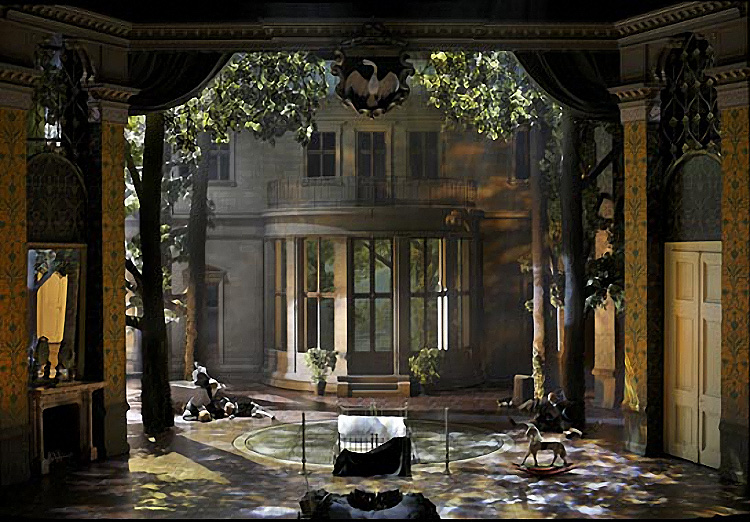 |
| Stefan Herheim's 2008 production of PARSIFAL at Bayreuth was a multi-sensory, multi-layered deconstruction of Richard Wagner's last work. Its aim was to present the "Bühnenweihfestspiel" as a history of Germany as well as a history of Bayreuth itself. As a result, the Act I set seen above incorporates the façade of Villa Wahnfried (in the background), and turns the prompter's box into Wagner's famous inscription-less gravestone. On the left (stage right) is a fireplace and above the mantelpiece a copy of Friedrich-August von Kaulbach's famous painting "Deutschland - 1914" which can be seen below. |
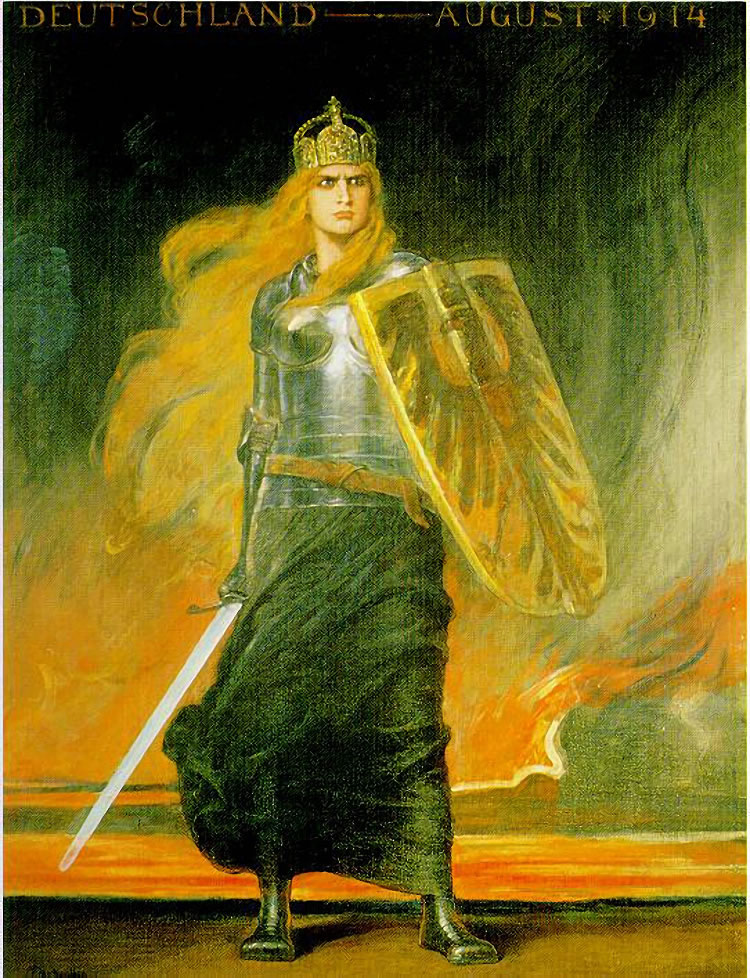 |
"Deutschland - 1914" by Friedrich-August von Kaulbach |
"Calling all Angels" |
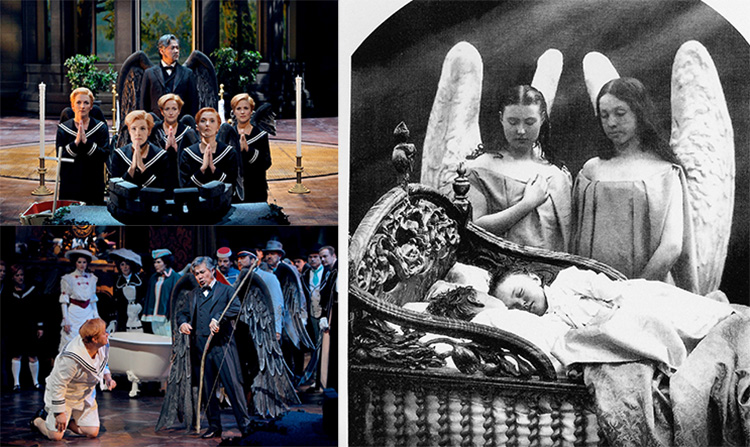
During Act I, but not during the prelude, all the characters, with the exception of Parsifal and Kundry, have wings on their backs that are reminiscent of the kind that artists have always associated with angels. On the right is a Victorian era photograph from the 19th century picturing guardian angels protecting two sleeping children. Despite its good intentions, to modern sensibilities this picture has a creepy vibe. Good inspiration for the dread that one often feels during the first act of Mr. Herheim's production.
|
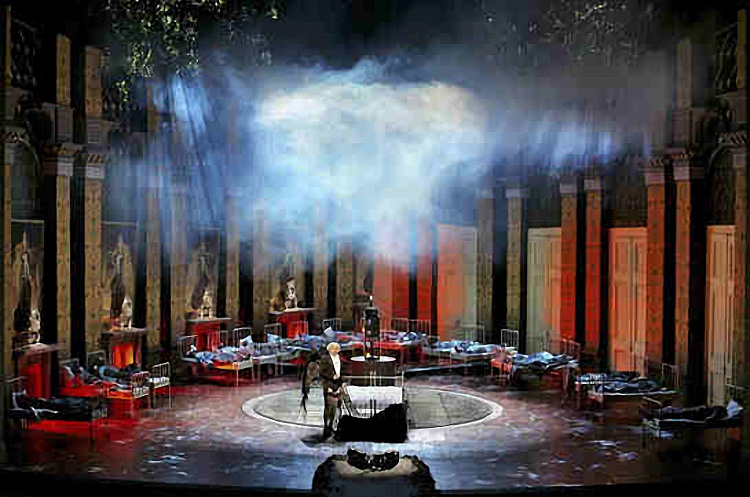 |
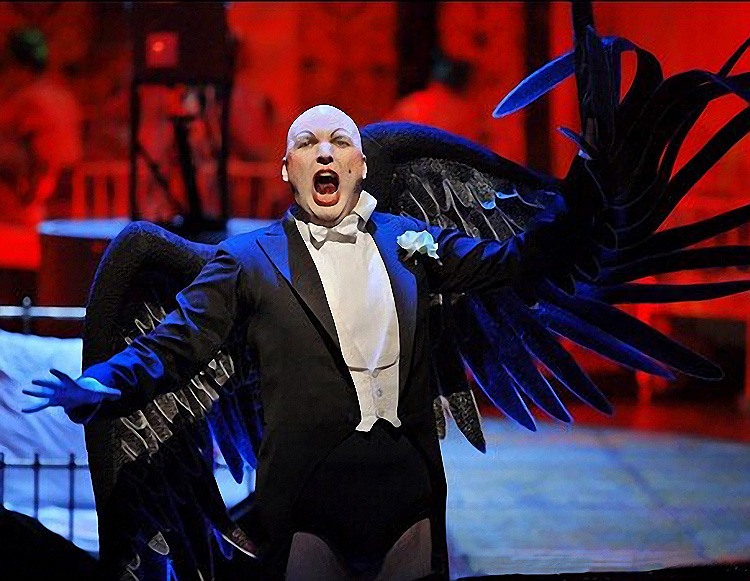 |
| As Act I comes to a conclusion, Germany marches to defeat in the Great War. At the beginning of Act II, Klingsor's lair is a hospital ward where the wounded and shell-shocked are suffering. Germany is defeated and politically and socially it is a depressed nation. The entertainment world of 1930's brings Marlene Dietrich to the world. The costumes for both a gender-bending Klingsor and Kundry are reminiscent of the great German star of Josef von Sternberg's great film The Blue Angel. |
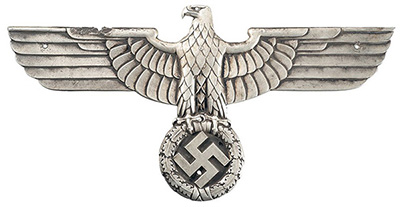 |
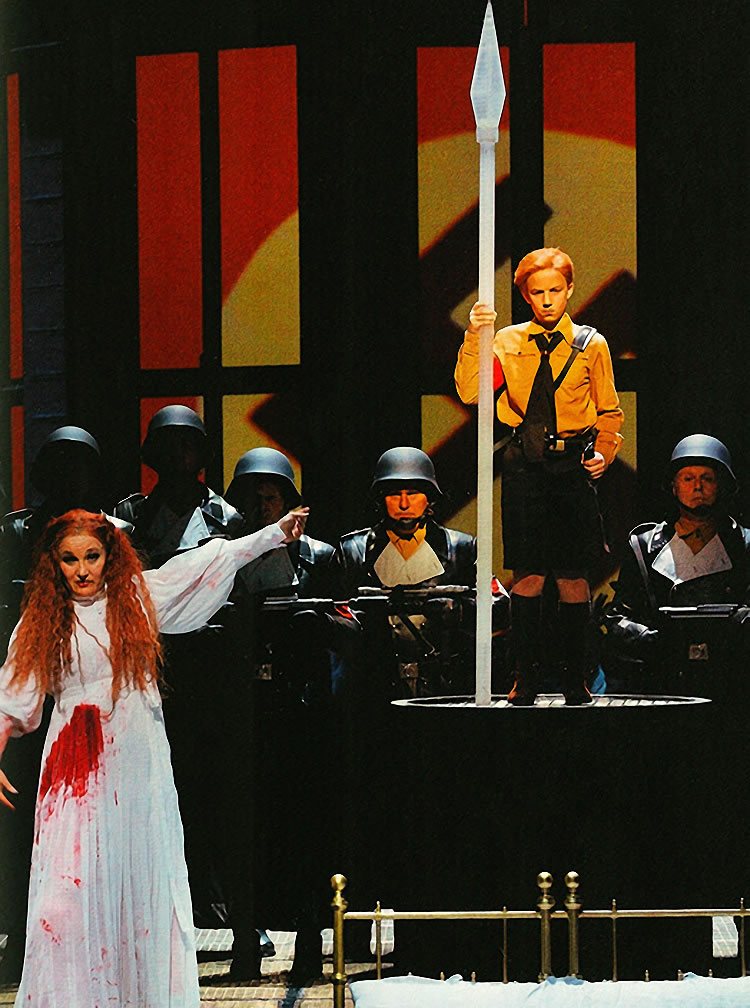 |
| Towards the end of Act II, Herheim shows us the rise of National Socialism. An eagle such as the one pictured above appears, surrounded by Swastika standards. The same boy who in the previous act played the young Parsifal, as well as the dead swan that Parsifal shoots down, now rises from the fountain in full "Hitlerjunge" regalia, carrying a spear and surrounded by Nazi soldiers. He hurls the spear at Parsifal who catches it. He inserts it into Wagner's grave. The spear begins to glow, and the eagle falls smashing into pieces, while the Nazi soldiers are wiped out in a shower of bullets. |
Finale to Act II from the ARTE TV HD telecast of 2012 |
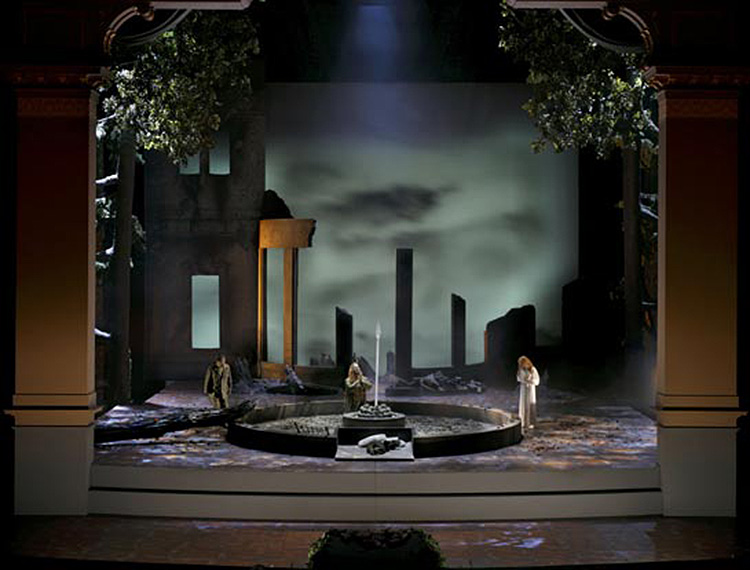 |
| Wahnfried is destroyed. Germany is in ruins as Act III begins. Parsifal returns from his journeys looking very much like the "Deutschland" figure from the painting seen in Act I. |
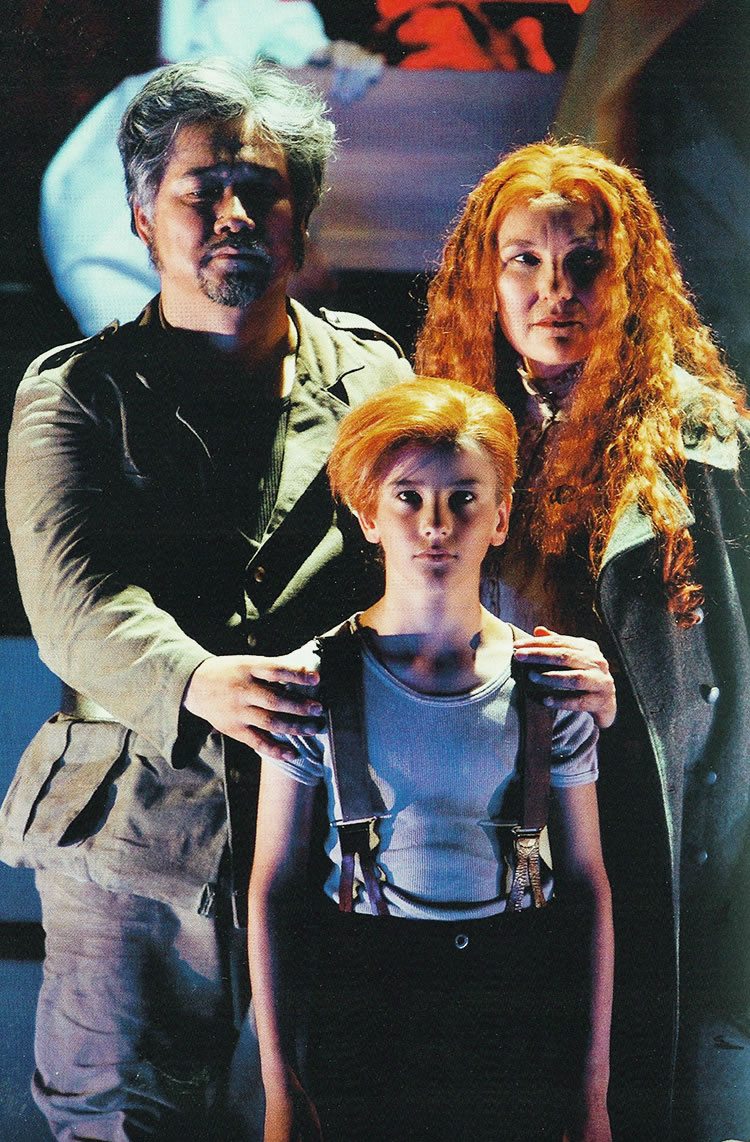 |
The defeated German people after World War II |
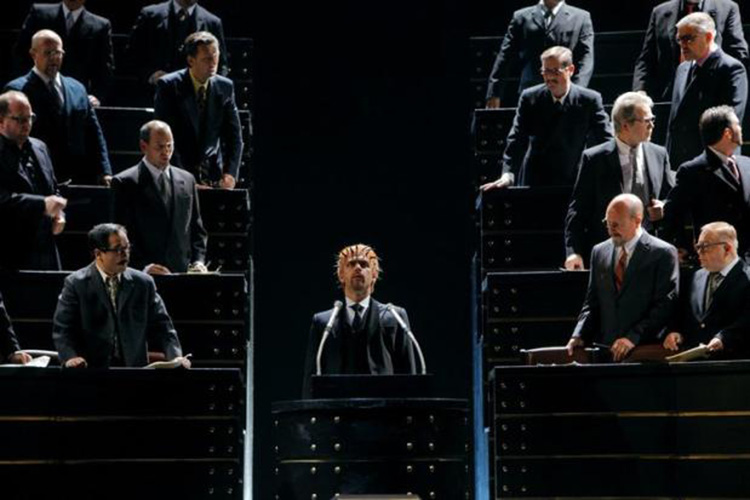 |
| The scene switches. Germany is now a divided nation, and we are in the West German Bonn Bundestag. Klingsor is addressing them at the podium. A giant mirror upstage reflects the huge German eagle on the floor. |
|
Finale to Act III from the ARTE TV HD telecast of 2012 |
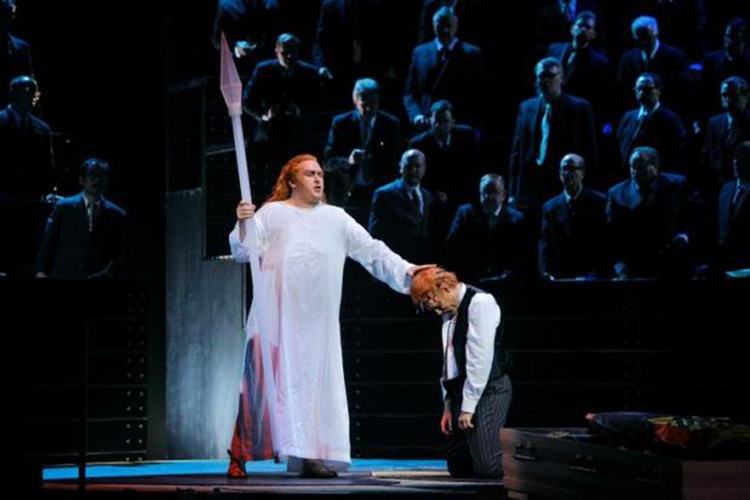 |
As Parsifal enters the chambers the giant mirror revolves to show the audience as well as Bayreuth's hidden orchestra. The audience is reflected on the mirror and becomes part of the production. If there is any kind of magic to the Grail it is one in which we can all universally share. The audience has the power to participate in the process, and thus has the right to renew the work. Below is a documentary about the making of this production. In German, with no subtitles |
|
The Making of Stefan Herheim's Parsifal - Part One |
The Making of Stefan Herheim's Parsifal - Part Two |
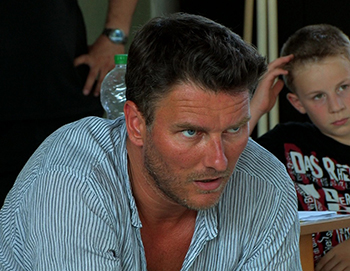 |
Left: Stefan Herheim rehearsing this production in Bayreuth on July 20, 2010. In conclusion, it is a unique, great production because it attempts to offer a perfect model of musical, historical, and socio-political "Gesamtkunstwerk." Even though the narrative concept greatly deviates from Wagner's story, the director has taken the work into a challenging realm where he explores not just the opera itself, but the myth of the work as expressed through the arts and politics of the German nation, and the links that it has to Bayreuth itself. |
|
|
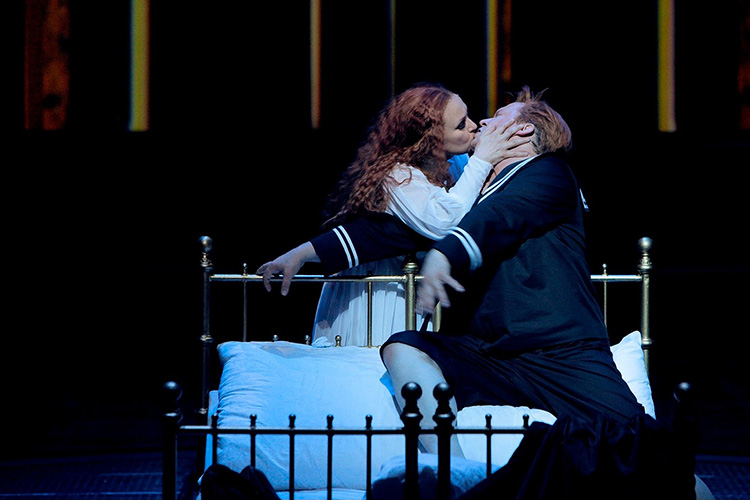 The center of the stage is dominated by a bed that will act as the place of birth, death, sleep, and seduction. All of the major characters will, at one time or another, use this bed for different reasons. This is the bed where Herzeleide (Parsifal's mother played by the artist who sings Kundry) gives birth to him, and where Kundry herself seduces the adult Parsifal. This is also the place where a mother dies in bloody childbirth, and Amfortas screams in agony when the baby is circumcised, a reminder for the audience of his lance wound following Wagner's libretto.
The center of the stage is dominated by a bed that will act as the place of birth, death, sleep, and seduction. All of the major characters will, at one time or another, use this bed for different reasons. This is the bed where Herzeleide (Parsifal's mother played by the artist who sings Kundry) gives birth to him, and where Kundry herself seduces the adult Parsifal. This is also the place where a mother dies in bloody childbirth, and Amfortas screams in agony when the baby is circumcised, a reminder for the audience of his lance wound following Wagner's libretto.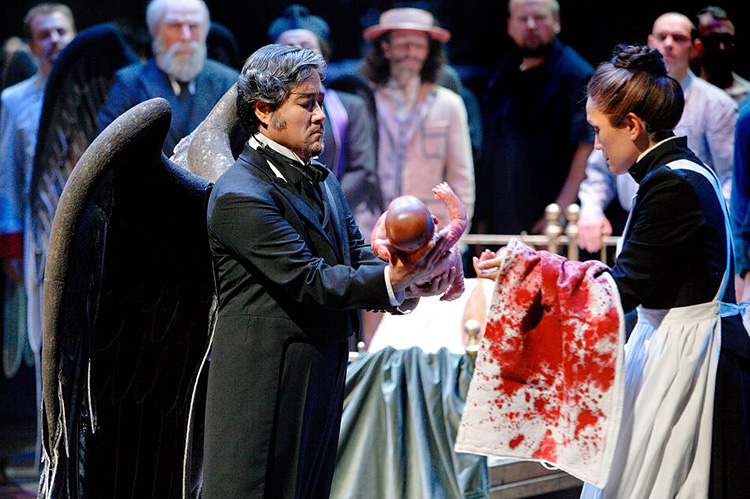 It is also the bed where a boy Parsifal awakens towards the conclusion of Act I, perhaps signaling to the audience that what we have seen is a dream. Gurnemanz enters, and suddenly the audience realizes that this is the first time we have seen him without his wings. Was it all a dream?
It is also the bed where a boy Parsifal awakens towards the conclusion of Act I, perhaps signaling to the audience that what we have seen is a dream. Gurnemanz enters, and suddenly the audience realizes that this is the first time we have seen him without his wings. Was it all a dream?